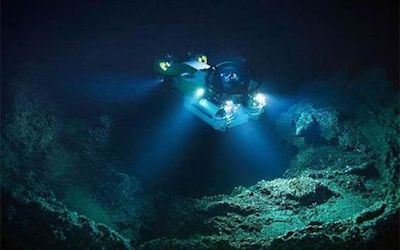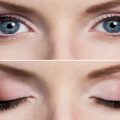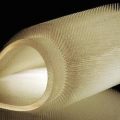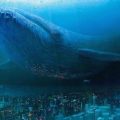PTE考生目前最大的问题之一就是练习题缺乏。除了有限的基本官方书(PLUS,Testbuilder, OG)之外就没有题了。很多英语基础不是很扎实的同学很难找到练习材料。悉尼文波雅思PTE培训学校专门为澳洲,尤其是悉尼、墨尔本的PTE考生准备了适合PTE听力阅读练习的科学60秒。各位PTE同学可以练习PTE听力中的summarise spoken text和PTE口语中的retell lecture,PTE听力口语-科学60秒-Frosty Moss练习记笔记技巧和复述。废话少说,下面开始:
听力内容:
60秒科学节目(SSS)是科学美国人网站的一套广播栏目,英文名称:Scientific American – 60 Second Science,节目内容以科学报道为主,节目仅一分钟的时间,主要对当今的科学技术新发展作以简明、通俗的介绍,对于科学的发展如何影响人们的生活环境、健康状况及科学技术,提供了大量简明易懂的阐释。
This is Scientific American — 60-Second Science. I’m Julia Rosen.
Got a minute?
The Mariana Trench is the deepest spot in the world’s oceans. Only three humans have ventured into the trench in submersibles. But plenty of our pollution has made the voyage to the bottom of the sea: a new study finds that critters living more than six miles below the ocean surface contain high levels of harmful compounds like polychlorinated biphenyls, or PCBs, and flame retardants.
“An important thing is that, if you’re in the deepest place in world, there’s no place to go.”
Alan Jamieson, a marine ecologist at Newcastle University in the U.K.
“You can’t be disturbed horizontally. You can’t go back up. So, for every nanogram of pollutant that’s gone into the deep sea, there’s no mechanism to put it back again. So, of course the values are going to be high, cause it’s only a one way traffic, right?”
Jamieson and his colleagues used robotic traps to collect deep-sea amphipods living in the most remote parts of the oceans. These creatures look a bit like shrimp, and they’re well adapted to their extreme environment, he says.
“The deep sea-ones are incredible scavengers. This is why they thrive in the deep sea, because it’s a low-food environment where most of their food comes from dead carcasses raining from the surface or particulates coming down. So, everything from an organic particle to a dead whale is fair game to an amphipod.”
The food that floats down to the ocean bottom carries man-made contaminants, including PCBs, which entered the surface ocean from rivers and coastlines. Companies stopped manufacturing these chemicals in the 1970s, after they were found to be dangerous. But they don’t break down easily, so they’re still swirling around in the oceans and working their way down to the seafloor, where amphipods gobble them up.
The research was published in the journal Nature Ecology and Evolution.
In many surface-dwelling species, PCBs have been shown to interfere with animals’ abilities to reproduce. Jamieson says they don’t have enough data yet to know how deep-sea amphipods are faring, because they’re much harder to study. But he says that wasn’t his motivation for studying pollutants in the deep ocean.
“The point is that they are there. It’s to challenge people’s perception that the deep sea is not exempt from what’s happening in the rest of the world. And that’s a perception we hear quite a lot of.”
Thanks for listening for Scientific American — 60-Second Science Science. I’m Julia Rosen.
墨尔本悉尼文波PTE原创首发
更多精彩请持续关注微信wenbo_tv3。





